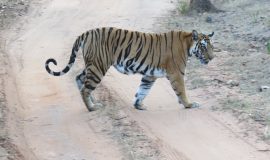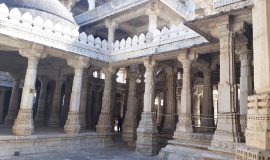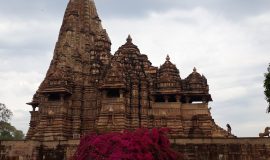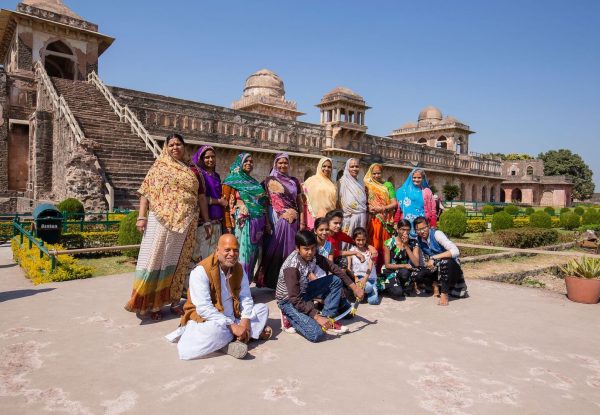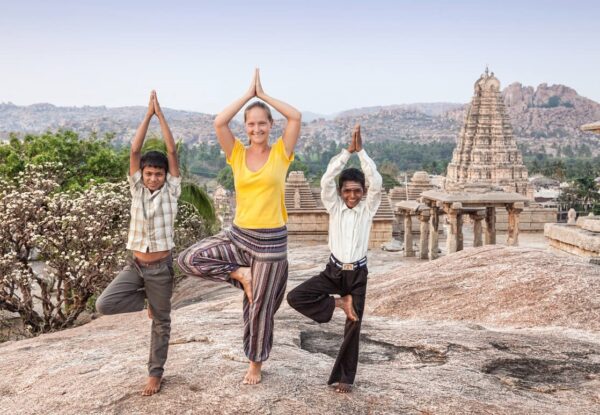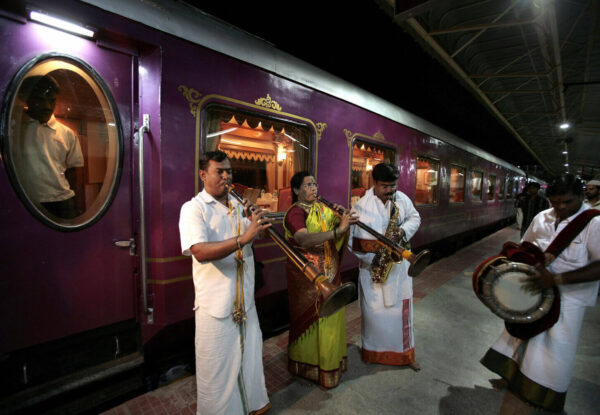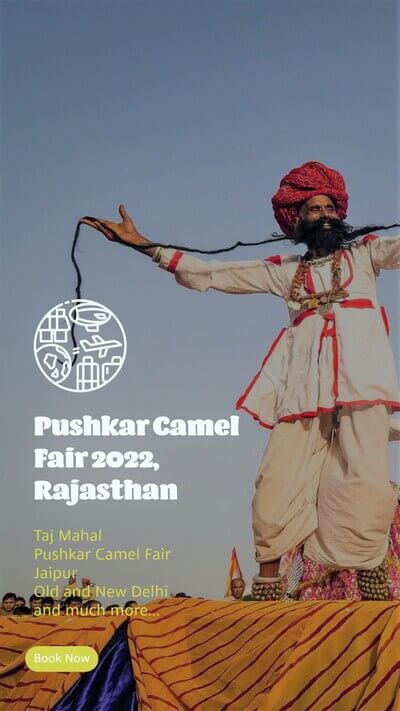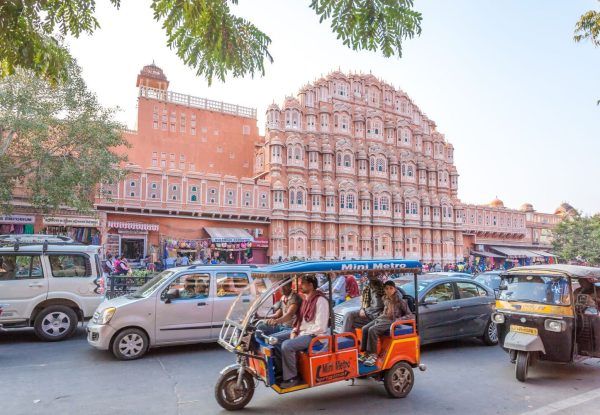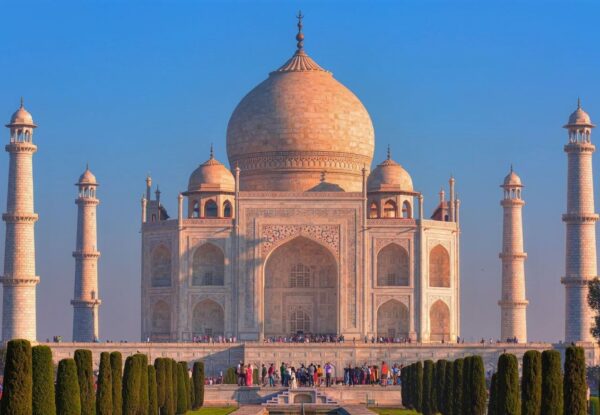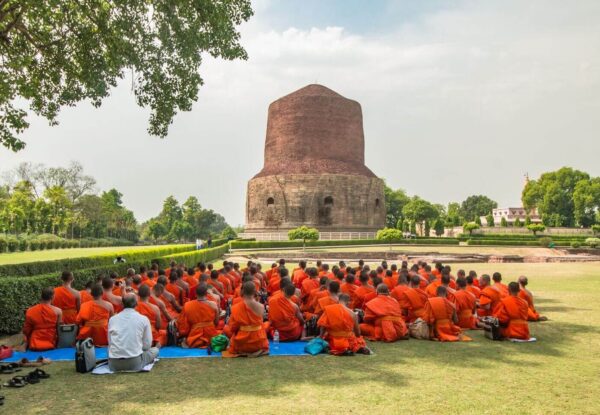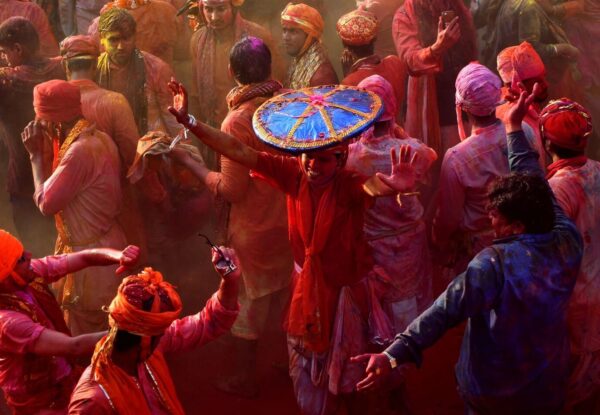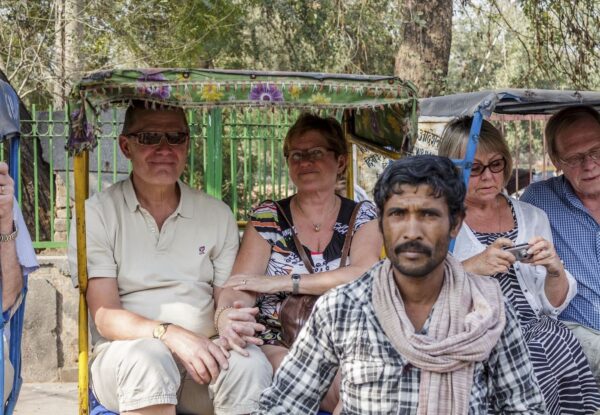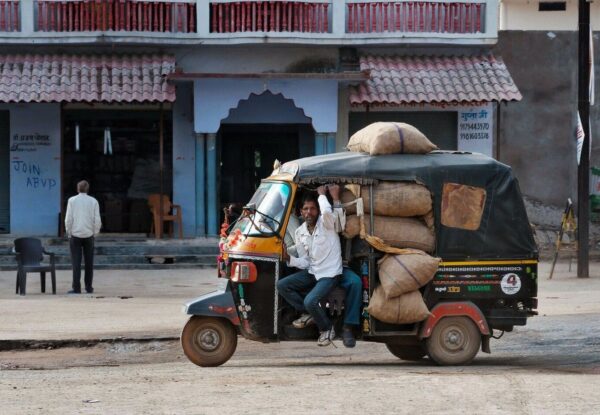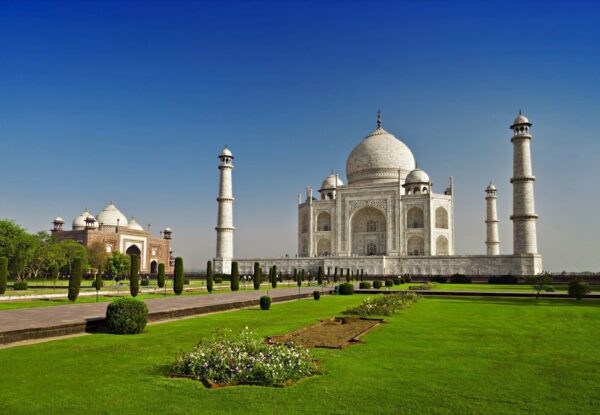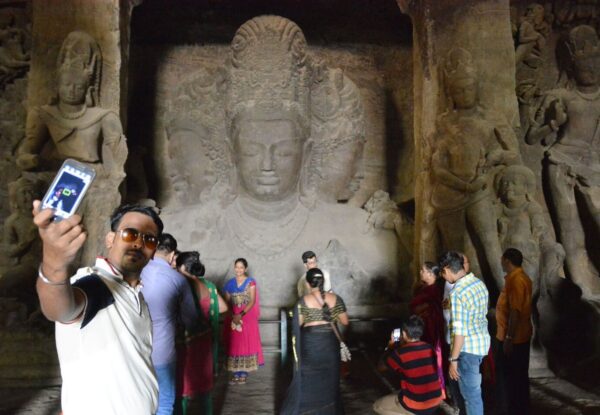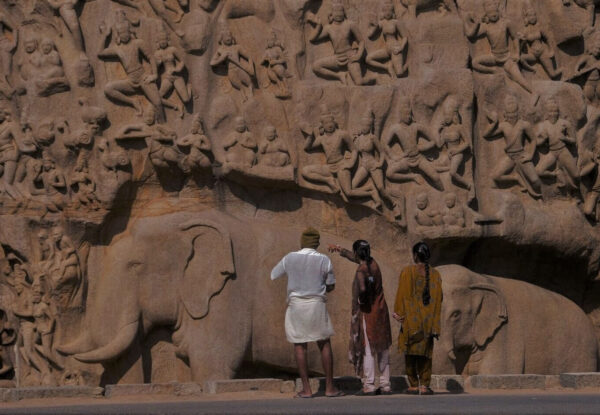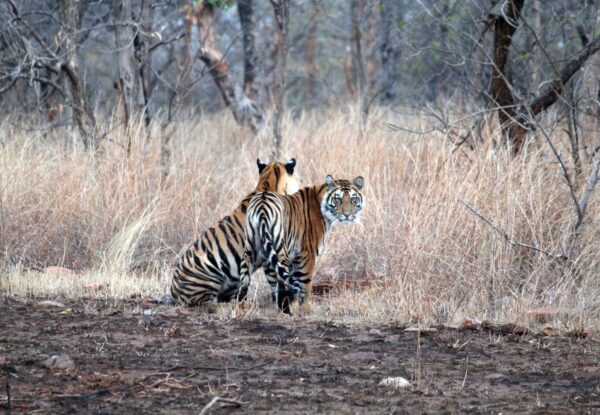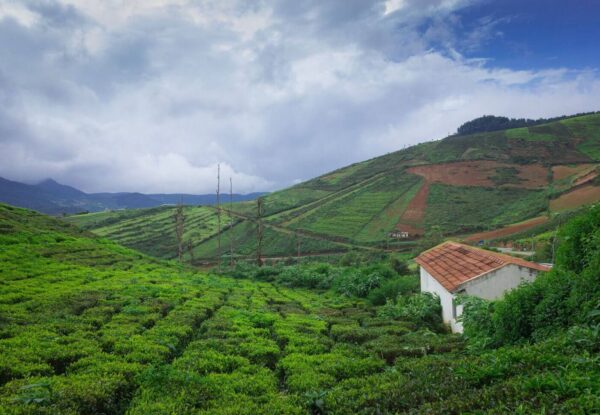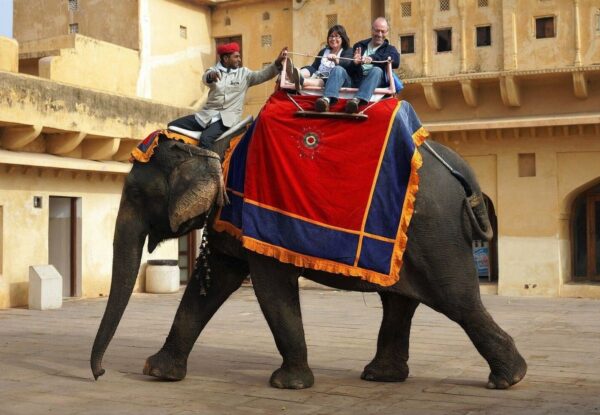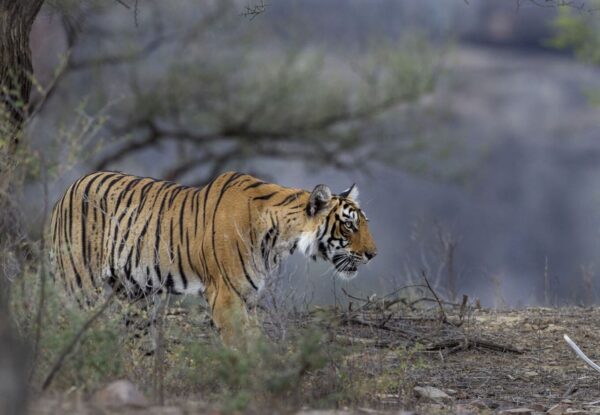Be a part of the ultimate India Tiger Safari experience as you venture on our India Wildlife tour!
Trip Details
➜ Looking for adventure and excitement? Then the Tiger Tour of India is just the thrill for you. Enjoy the coveted experience of actually seeing the elusive, yet majestic, orange striped creature in its own natural habitat. As you take this adventure on the India tiger safari, you will experience some magical moments in India’s National Parks, even though they are relatively small when compared to those in Africa. While venturing on this India Tiger Safari and Wildlife India Tour, brace yourself for the emotional rush you will experience on your encounter with herds of elephants, wolves, maybe leopards, and of course the Bengal Tiger.
➜ The conservationists in India have been doing a fantastic job in preserving the Tiger population and ensuring that on your India tiger tour you get the best opportunity to spot and track a tiger. The most recent census conducted in 2019 shows that the tiger population of India has increased by nearly 33 per cent in a period of three years, rising from 2,226 to 2,967 with the major increases occurring in the parks of Central India (Madhya Pradesh). This is in contrast to other regions of the world where the tiger population has been decreasing. This data was collected by utilizing the most recent technology including digital imaging of pug marks, satellite data, camera traps, and, tagging.
➜ TRAVEL GUIDE TO INDIA’S WILDLIFE IMPORTANT INFORMATION AND TIPS
➜ Come along with us on our India tiger tour as we track the footsteps of a tiger at three of India’s major national parks and experience an India Wildlife tour of your dreams. Take in the amazing events and exciting encounters with the largest of all the animals in the cat family, as you go on the tiger safari India. VacationIndia.com selects Jeep safaris that are guided by the experts, and we arrange for you to escape the crowds and be housed in small camps and lodges that are owned and operated by the best-known conservationist in the field. Our aim is to allow you to enjoy your India Tiger Safari to the fullest. As we journey, we will pass through the Old Delhi and see the Khajuraho temples and the Orchha fort palace. Not to be left out, of course, is the internationally famous Taj Mahal as well as Jaipur’s rocky forts and palaces; helping you to be a part of the fascinating combination of history and culture and leaving you with an authentic Indian experience.
Highlights – On The Footsteps of Tiger-The India Wildlife Tour
- 14 Guided Tiger Safaris in Bandhavgarh National Park (Madhya Pradesh), Kanha Tiger Reserve (Madhya Pradesh) and Ranthambore National Park (Rajasthan)
- Explore the Avian paradise at Bharatpur – Keoladeo National Park (UNESCO Natural Heritage) on your India tiger tour
- Visit the amazing ‘wonder of wonders’ the Taj Mahal
- Discover Historic treasures of Delhi, Khajuraho, and Jaipur

India your way, your route, your style
• Price based on two persons in a double room
• Prices are in USD Excluding international flights
• Do you prefer to travel alone or would you like to come to India with a group of friends? We will be happy to tailor-made your tour program that meets all your wishes and needs
| Travel Period | PRICE PER PERSON | |
|---|---|---|
| Apr 1, 2024 – Mar 31, 2025 | from $2885 (Standard) | INQUIRE NOW |
| Apr 1, 2024 – Mar 31, 2025 | from $3495 (Deluxe) | INQUIRE NOW |
| Apr 1, 2024– Mar 31, 2025 | from $4795 (Luxury Taj Hotels) | INQUIRE NOW |
Would you like to have the trip tailored to your wishes?
Our itineraries are only examples and suggestions and can be customized individually. For example, a trip can be shortened or extended with additional destinations or monuments, the hotels can be a mix of 4 and 5 star etc. Let us know your personal wishes so that we can adapt the trip to your wishes. Connect with our travel expert for a 1:1 consultation and receive your obligation free travel proposal. Together with the travel request we will send you the hotel list so that you can get a picture of the hotels selected on the internet. We promise ✔Competent and Friendly Guides ✔Expert Drivers ✔Best Hotels ✔24/7 Support. Read more on Why Vacation India?
Get in Touch: info@vacationindia.com / +91-99274-65808 (India Calling & Whatsapp) / USA/Canada: 1 (888) 414-6804
Included Services
- 15 days individual travel from New Delhi to New Delhi
- 14 Nights in a double room or single room in selected hotels according to the booked category
- Daily breakfast
- A high-quality air-conditioned car with driver at your disposal during your entire stay
- Round trip, sightseeing and all excursions as mentioned in the tour program
- Services of a Local English-speaking guide
- Transfers airport – hotel – airport
- All monument entrances as described in the tour program
- Jeep Safaris as mentioned in the Program (4 shared Jeep Safaris in Ranthambore National Park (Exclusive private Jeep Safaris in Ranthambore is possible at a surcharge), 5 Exclusive (Private) Jeep Safaris in Bandhavgarh and 5 Exclusive (Private) Jeep Safaris in Kanha
- All Meals (Breakfast, Lunch and Dinner), during your stay in National parks – Ranthambore, Bandhavgarh and Kanha)
- Visit to Keoladeo National Park
- 2 hours Rickshaw Safari in Keoladeo National Park together with the services of a Naturalist
- Entrances to all National Parks and Tiger Reserves
- Services of Naturalist during safaris in the National Park
- Visit to the Taj Mahal
- Elephant ride or Jeep to Amber Fort in Jaipur
- Guided Walk through the old pink city of Jaipur
- Rickshaw ride in Old Delhi
- 2-liter bottles of mineral water per person per day is
- 24 hours contact in India
- All taxes and fees, parking, tolls, and interstate taxes etc.
Services Not Included
- International and Domestic Flights
- Any type of travel insurance
- Visa fees
- Main meals not mentioned
- Separate camera and video charges during the visits to monuments [Digital cameras are allowed free of charge in most of the monuments in India] Frequently asked questions
- Expense of personal nature like tipping, laundry, telephone/fax calls, alcoholic beverages, medical expenses, etc.
India Wildlife Trip Notes
- In Central and North India, the National Parks are open from the middle of October to the end of June
- Morning and Afternoon Game Drives in Jeeps allow you to enter the park at sunrise, go back to your lodge or camp for breakfast and lunch, take a rest and then return to the park in the late afternoon
- India’s national parks do not have any camps or lodges within, and entrance and exit are at specific times, usually at sunrise and sunset
- Note carefully, that in December and January the weather in the National parks of India, can be very cold early in the morning and night and there can be sudden frost which kills the grass. You are advised to wear jackets, gloves, and scarfs to keep you warm
- At Ranthambhore, Bandhavgarh and Kanha you have several options for accommodation. From economy to top of the line eco –lodges. Meals are all-inclusive at the Wildlife Lodges
- There has been a recent change in the management of national parks by the Indian authorities which includes the methods for booking game drives. One such change is the reduction in the number of jeeps permitted to enter the park and advance payments and bookings must be made far in advance. Safari bookings are done on a first come first serve basis
- At the time of booking each game drive, a list of client names and details of the passports are requested. Payments for Jeep Safaris are non-refundable after bookings are made and there can be no changes done in names
- In order for us to secure the necessary game drives we advise that you book all wildlife trips at least 1-2 months in advance
Vacation India Trip Notes
➜ All the above-mentioned tour prices are per-person prices, calculated for 2 people sharing a double room
➜ Price for single occupancy and price for a group can be provided on request
➜ We offer the services of multilingual guides for most Indian destinations. Please consult our travel advisor at the time of the booking. Our guides are well versed with languages such as Spanish, German, French, Italian, Russian etc.
➜ The number of overnight stays and the program may vary depending on the international flight you choose
➜ Tour Price is subject to change, taking into consideration any increase in current Indian tax rates or Monument Entrance fees or any increase in fuel prices. We reserve the right to recalculate the offer price
➜ We book rooms only after your tour confirmation. We always try our best to book you the offered hotel, but in case the offered hotel is fully booked out, we offer, in consultation with you, an equivalent alternative. After all hotels are confirmed, we will send you a definitive list of all the hotel address and contact information
➜ In all flight arrangements VacationIndia.com acts only as an intermediary. We might be forced to renew the charges if there is a change in flight schedule or price (fares, taxes) and we reserve the right to change our price quote accordingly
➜ We expressly reserve the rights for any changes in tour program, errors, and omissions
Rajasthan tour with national parks
**This review was written in German and has been translated using Google Translator
We decided to book the round trip on VacationIndia.com because the website was very appealing and also showed flexibility. Rajasthan with the Rambathore National Park seemed tempting, but we wanted more nature. Vikas has added another national park (Bandavagarh) to the trip. The total of 8 game drives in the two national parks were great and we saw some tigers and even leopards. The whole trip was very well organized. Everything always worked out on time, even with the two domestic flights. We had a good comfortable car, very safe drivers and competent, very friendly guides in all cities. We would especially like to mention Imran in Agra. On the way, clean restaurants with delicious lunches were always approached. The selected hotels have all convinced us, especially in terms of ambience and location. Vikas was always personally concerned and kept asking via Whats App if everything was working. We would like to thank him very much for the dinner in Agra, where we ate great and had a lot of fun.
The train journey from Jainsi to Agra was also very interesting and the train journey from Phulad to Kamlighat was very impressive. Looking back, we can only say: it was so exciting, instructive and varied. Yes, we thoroughly enjoyed every day.
It was the first trip to India but certainly not the last, because the large country inspires with all its cultural and natural treasures.
Denise and Rolf
To receive the list of Hotels selected for this tour, please email us at info@vacationindia.com
Keywords: wildlife india tiger tour, india wildlife tiger safari tour
Similar Tours You May Like
India Impressions
Mumbai ➜ Aurangabad (Ajanta & Ellora Caves) ➜ Indore ➜ Mandu ➜ Maheshwara & Omkareshwar ➜ Ujjain ➜ Bhopal ➜ Bhimbetka Caves and Bhojpur ➜ Jhalawar ➜ Rawatbhata ➜ Bundi ➜ Chittorgarh ➜ Mumbai or Delhi
The Grand Rajasthan Tour: Walk in the Footsteps of Maharajas
New Delhi ➜ Jaipur ➜ Agra ➜ Jaipur ➜ Nawalgarh (Shekhawati region including Mandawa & Fatehpur) ➜ Bikaner ➜ Deshnoke (Rat Temple) ➜ Jaisalmer (Sam Dunes) ➜ Osian ➜ Luni (Jodhpur and Bishnoi village) ➜ Mount Abu ➜ Kumbalgarh ➜ Ranakpur Jain Temple ➜ Udaipur ➜ Chittorgarh ➜ Bundi ➜ Pushkar ➜ Alwar ➜ New Delhi ➜ Goa ➜ New Delhi
Top Destinations in Rajasthan Including Heritage Palace Hotels, the Taj Mahal and a Goa Beach Holiday
Old and New Delhi ➜ Jaipur ➜ Jodhpur ➜ Ranakpur ➜ Udaipur ➜ Sardargarh Heritage Palace Hotel ➜ Bundi ➜ Ranthambhore National Park ➜ Agra (Taj Mahal and Red Fort) ➜ New Delhi ➜ Fly to Goa ➜ New Delhi/ Mumbai
Golden Triangle India + Varanasi (Ganges)
Old and New Delhi ➜ Agra ➜ Fatehpur Sikri ➜ Abhaneri Step-well ➜ Jaipur ➜ Varanasi (Ganges) & Sarnath – New Delhi
Best of North and South India in 28 Days
Old and New Delhi ➜ Udaipur ➜ Ranakpur ➜ Jodhpur ➜ Deogarh Palace Heritage Hotel ➜ Jaipur ➜ Ranthambore Tiger Reserve ➜ Agra ➜ Fatehpur Sikri ➜ Orchha ➜ Khajuraho ➜ Varanasi (Ganges) ➜ Chennai ➜ Kanchipuram ➜ Mamallapuram ➜ Tanjore (Thanjavur) ➜ Trichy ➜ Chettinad Region ➜ Madurai ➜ Munnar ➜ Thekkady (Periyar Tiger Reserve) ➜ Alleppey (Houseboat Kerala Backwaters) ➜ Kumarakom ➜ Mararikulam Beach ➜ Kochi ➜ Chennai/Mumbai
Holi Festival Tour 2024 – Holi in Vrindavan and Pushkar
Old Delhi and New Delhi ➜ Mathura ➜ Agra ➜ Jaipur ➜ Pushkar ➜ Deogarh Mahal Palace Hotel ➜ Rankpur ➜ Udaipur ➜ New Delhi
North India Sojourn with Taj and Oberoi Hotels
Old and New Delhi ➜ Udaipur ➜ Ranakpur ➜ Jodhpur ➜ Deogarh Palace Heritage Hotel ➜ Jaipur ➜ Ranthambore Tiger National Park ➜ Agra ➜ Fatehpur Sikri ➜ Orchha ➜ Khajuraho ➜ Varanasi ➜ New Delhi
Treasures of Central India (15 days)
New Delhi ➜ Indore ➜ Dhar ➜ Mandu ➜ Omkareshwar ➜ Maheshwara ➜ Ujjain ➜ Bhopal ➜ Sanchi and Udaygiri ➜ Bhimbetka Caves and Bhojpur ➜ Jabalpur ➜ Bandhavgarh Tiger National Park ➜ Khajuraho ➜ Orchha ➜ Jhansi ➜ Datia ➜ Sonagiri ➜ Gwalior ➜ Chambal Wildlife Sanctuary ➜ New Delhi + Optional tour of Taj Mahal
Golden Triangle + Tiger National Park
Old Delhi & New Delhi ➜ Agra ➜ Fatehpur Sikri ➜ Abhaneri ➜ Jaipur ➜ Ranthambore National Park ➜ Delhi
India Getaway – Delhi to Mumbai
New Delhi ➜ Amritsar (Golden Temple) ➜ New Delhi➜ Agra ➜ Fatehpur Sikri ➜ Jaipur ➜ Sardargarh Fort Heritage Palace Hotel ➜ Udaipur ➜ Mumbai ➜ Elephanta Caves ➜ Mumbai
Treasures of Central India (15 days)
New Delhi ➜ Indore ➜ Dhar ➜ Mandu ➜ Omkareshwar ➜ Maheshwara ➜ Ujjain ➜ Bhopal ➜ Sanchi and Udaygiri ➜ Bhimbetka Caves and Bhojpur ➜ Jabalpur ➜ Bandhavgarh Tiger National Park ➜ Khajuraho ➜ Orchha ➜ Jhansi ➜ Datia ➜ Sonagiri ➜ Gwalior ➜ Chambal Wildlife Sanctuary ➜ New Delhi + Optional tour of Taj Mahal
Grand South India Tour (31 Days)
Chennai (Madras) ➜ Kanchipuram ➜ Mahapalipuram (Mamallapuram) ➜ Pondicherry ➜ Darasuram & Gangaikondacholpuram ➜ Tanjore ➜ Trichy ➜ Chettinad ➜ Madurai ➜ Rameswaram ➜ Kanyakumari ➜ Kovalam ➜ Alleppey (Houseboat Tour) ➜ Kumarakom ➜ Periyar Tiger Reserve ➜ Munnar (Tea Plantations) ➜ Cochin (Kochi) ➜ Ooty ➜ Kabini and Nagarhole NationalpPark or Bandipur National Park ➜ Mysore (Srirangapatnam & Somnathpur) ➜ Hassan (Belur und Halebidu) ➜ Hampi ➜ Aihole & Pattadakal ➜ Badami ➜ Goa ➜ Chennai / Mumbai
Golden Triangle + Tiger National Park
Old Delhi & New Delhi ➜ Agra ➜ Fatehpur Sikri ➜ Abhaneri ➜ Jaipur ➜ Ranthambore National Park ➜ Delhi
Royal Tiger Safari
New Delhi ➜ Sawai Madhopur ➜ Ranthambhore Tiger Reserve ➜ Gwalior ➜ Khajuraho ➜ Bandhavgarh National Park ➜ Kanha National Park ➜ Pench Tiger Reserve ➜ Tadoba National Park ➜ Mumbai
South India Wildlife and Trekking Tour
Madikeri (Coorg) ➜ Nishani Motte Trek ➜ Namdroling Monastery ➜ Kabini Wildlife Sanctuary ➜ Nagarhole National Park ➜ Ooty ➜ Pollachi ➜ Anamalai Tiger Reserve or Parambikulam Tiger Reserve ➜ Munnar ➜ Eravikulam National Park Madurai ➜ Chinnar Wildlife Sanctuary (Thoovanam Waterfalls) ➜ Madurai (Meenakshi Temple) ➜ Chennai
Rajasthan Vacation in 10 Days
Old and New Delhi ➜ Agra ➜ Fatehpur Sikri ➜ Keoladeo National Park ➜ Ranthambhore Tiger National Park ➜ Bundi ➜ Jaipur ➜ New Delhi
TOUR INDIA’S TOP TIGER RESERVES: VISIT KANHA, PANNA, BANDHAVGARH AND PENCH
13 Days starting from Mumbai or New Delhi ➜ Nagpur ➜ Pench Tiger Reserve ➜ Kanha National Park ➜ Bandhavgarh National Park ➜ Panna Tiger Reserve ➜ Khajuraho ➜ Ranthambore National Park ➜ Agra (Taj Mahal and Red Fort) ➜ Delhi (End)


